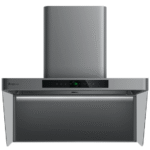Relocating to a new community is one of those life-changing moments that can feel equal parts thrilling and nerve-wracking. Whether you’re considering a retirement community, senior living facility, or simply a different neighborhood, knowing what’s ahead can turn those butterflies in your stomach into genuine excitement. This journey goes far beyond the logistics of packing boxes and forwarding your mail, it’s about embracing an entirely fresh lifestyle, building meaningful relationships, and uncovering opportunities that can genuinely enhance how you experience each day. When you walk into this transition with your eyes open and a clear sense of what to expect, you’ll find yourself approaching the move with confidence rather than concern, ready to fully embrace the new surroundings and all the possibilities waiting for you there.
Understanding the Transition Period
Here’s something reassuring: most people take somewhere between three to six months to really settle into a new community, though this timeline isn’t set in stone. Everyone moves at their own pace. During those first few weeks, you might wake up one morning feeling absolutely energized about this new adventure, and the next day find yourself missing the familiar comforts of your old neighborhood. These emotional ups and downs? Completely normal.
Creating small, consistent routines early on can work wonders for your sense of stability. Maybe it’s having coffee in the same spot each morning, taking a walk at a certain time, or calling a family member on days. These little anchors provide comfort while everything else still feels somewhat new. The physical side of settling involves more than just arranging your furniture the way you like it.
Building Connections and Social Networks
One of the truly wonderful aspects of community living is the chance to forge new friendships that can become incredibly meaningful. Most well, established communities have this wonderful social energy where residents naturally interact, whether that’s through planned activities, chance encounters in the hallway, or groups organized around shared interests. Putting yourself out there by introducing yourself to neighbors, showing up to community events, and joining group activities can significantly speed up the friendship-building process. If you’re someone who typically needs time to warm up new people, take heart knowing that many of your new neighbors once stood exactly where you’re standing now, feeling the same mixture of anticipation and apprehension.
Finding clubs or classes that match what you already enjoy gives you natural conversation starters and common ground with potential friends. Love reading? There’s probably a book club. Enjoy staying active? Fitness classes offer both exercise and socializing. Interested in giving back? Volunteer opportunities let you contribute while connecting.
Adapting to New Routines and Services
Every community has its own rhythm and way of doing things, and these patterns might be quite different from what you’re used to. Getting comfortable with these new routines is essential for feeling truly at home. You’ll need to learn when meals are served, how the housekeeping schedule works, what transportation options exist, and how to put in maintenance requests when something needs attention. Some residents find it helpful to jot down key information during their first few weeks, contact numbers, service schedules, procedures for various amenities, until this knowledge becomes second nature.
Make sure you’re taking full advantage of what your community offers, because these amenities exist specifically to make your life easier and more enjoyable. Whether it’s dining services that free you from cooking, fitness centers that keep you active, or libraries stocked with books you’ve been meaning to read, exploring these resources helps you understand what you’re gaining from this move. Some services might require advanced scheduling while others welcome drop-ins, so understanding how each one operates ensures you can use them effectively. Don’t hesitate to try services you’ve never experienced before; moving to a new community is the perfect time to expand your horizons.
Healthcare and Wellness Considerations
Knowing what healthcare and wellness resources are available in your new community provides essential peace of mind as you settle in. When transitioning to senior living environments, families seeking a trusted assisted living home Redlands, CA often prioritize communities that offer comprehensive on-site healthcare services, wellness programs, and partnerships with local medical providers that can significantly simplify managing health needs. Early in your transition, invest some time in learning about available medical services, how to access them quickly, and what protocols are in place for emergencies. If your community employs wellness coordinators or nursing staff, arranging an introductory meeting to discuss your specific health needs can be tremendously helpful.
Staying physically and mentally well requires you to actively engage with the health-focused programming your community provides. This might mean attending fitness classes designed for various ability levels, joining walking groups that explore the neighborhood, participating in water aerobics, trying meditation sessions, or accessing nutritional counseling. Many communities also organize health education workshops, preventive screening programs, and routine wellness checks that help you stay informed about your health and catch potential issues early. If you’ve built relationships with doctors or specialists outside the community, coordinate with staff about transportation arrangements or scheduling assistance.
Personalizing Your New Living Space
Making your new living quarters feel like *your* space plays a huge role in how quickly you adjust and how happy you’ll be overall. Surrounding yourself with cherished belongings, favorite furniture pieces, family photographs, artwork that speaks to you, and personal mementos, creates that essential bridge between your old life and your new one. You might be working with less square footage than before, but thoughtful arrangement and selective decoration can make even compact spaces feel surprisingly comfortable and distinctly yours. Think practically about your layout, making sure the things you use daily are within easy reach and that your space supports how you live your life.
Most communities give residents considerable freedom in personalizing their apartments or rooms, from choosing paint colors and window treatments to arranging furniture and adding decorative touches. Understanding any guidelines or restrictions regarding modifications helps you plan appropriately while respecting community standards and safety requirements. Some people find it less overwhelming to personalize gradually rather than trying to do everything at once. Remember, you’re already managing a lot during this transition. Adding plants brings life into your space, comfortable seating creates inviting areas for relaxation or hosting visitors, good lighting makes everything more pleasant, and smart organizational solutions keep things functional.
Staying Connected with Family and Friends
Just because you’re building a new life doesn’t mean your existing relationships become any less important. Maintaining strong connections with family members and friends outside your community remains absolutely vital for your emotional wellbeing. Modern technology has made staying in touch easier than ever, video calls let you see grandchildren’s faces, messaging apps keep you in the loop on family news, and email allows for more thoughtful correspondence. If technology isn’t your strong suit, don’t worry.
Welcoming visitors is important too, so familiarize yourself with your community’s guest policies, whether overnight accommodations are available, and what amenities visitors can access. Most communities genuinely welcome family involvement and provide comfortable spaces where you can spend quality time visiting relatives and friends. When people do visit, show them around, introduce them to your new friends, and share what you’ve been up to, this helps them feel good about your living situation and understand this new chapter you’re writing. Some communities host family events or open houses that provide wonderful opportunities for your relatives to see firsthand what your daily life is like.
Conclusion
Moving to a new community marks a significant life transition that brings both challenges and tremendous opportunities for personal growth, meaningful connection, and an enhanced quality of life. By understanding what to expect during those initial adjustment months, actively engaging with social opportunities, adapting to new routines, and taking full advantage of available resources and services, you’re setting yourself up for a genuinely successful and satisfying experience in your new home. Remember that everyone’s adjustment timeline looks different; there’s absolutely no pressure to feel completely settled overnight or to immediately act like you’ve lived there for years. Give yourself permission to take this at your own pace, celebrate the small wins as they happen, and stay open to the new experiences and friendships that are waiting around the corner.


